Author: Dr. Michael Lichtenberg
Institution: Arnsberg Vascular Clinic, Germany
Summary
This article delves into the techniques for recanalizing chronic total occlusions (CTO) of the iliocaval veins in venous interventions. It highlights the differences between traditional blunt recanalization and sharp recanalization techniques. A focus is placed on the novel Traversa device, which significantly improves recanalization success rates and reduces procedure time.
Introduction
Chronic venous occlusions (CVOs) present a major challenge in interventional treatment. Blunt recanalization methods can have high failure rates, particularly in iliocaval or central venous occlusions. Sharp recanalization techniques, such as using TIPS needles and radiofrequency wires, have become necessary adjuncts in many cases. This paper reviews the various CTO recanalization techniques, especially focusing on the promising Traversa device.
Clinical Challenges in Treating Chronic Venous Occlusion
•Limitations of Blunt Recanalization:
•While blunt recanalization techniques are effective in most patients, approximately 20% of cases require advanced recanalization technologies. Primary CVOs of the iliofemoral veins, stent occlusions, and dialysis-related venous occlusions are particularly difficult to manage.
•High Radiation Exposure: Due to the complexity of recanalization procedures, both patients and physicians often face prolonged radiation exposure, which remains a challenge in CVO treatments.
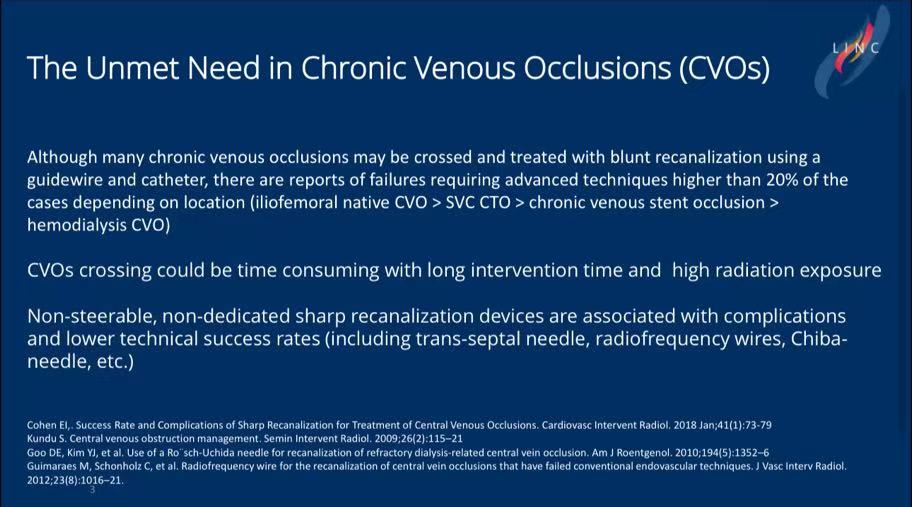
Sharp Recanalization Techniques
•Technique Options:
•Sharp recanalization methods include using radiofrequency wires, TIPS needles, and other specialized devices for cases where traditional methods fail.
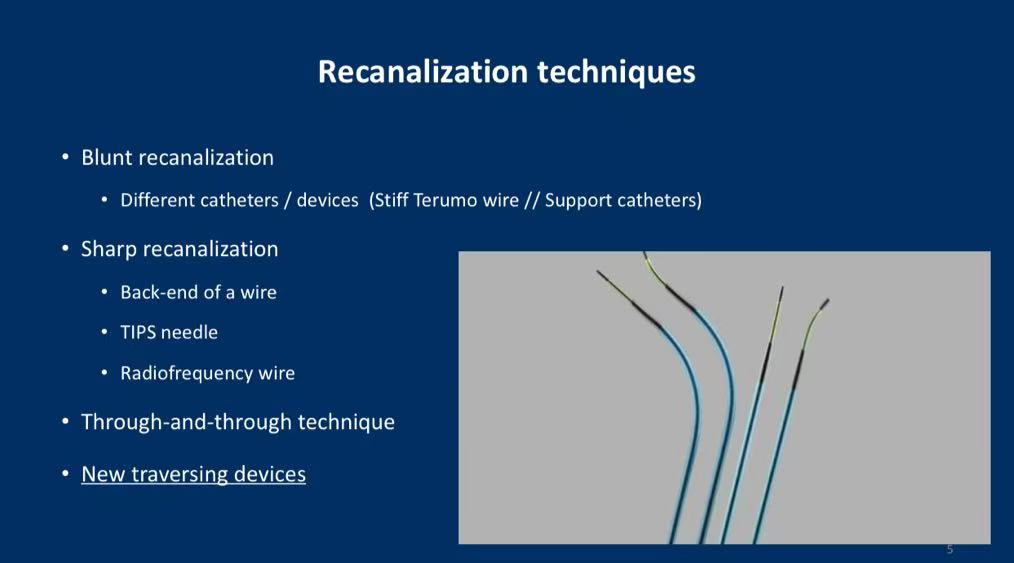
•Efficacy Comparisons: In one study, sharp recanalization using TriForce catheters had a 69% success rate, compared to only 38% for traditional wire-guided catheter recanalization techniques.
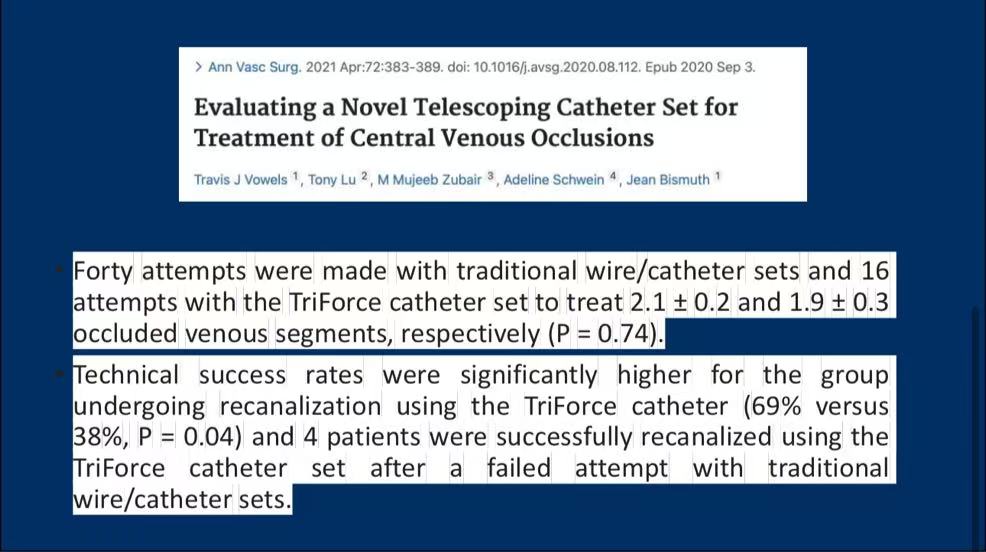
The Traversa Device
•Advantages:
•The Traversa device is specially designed for crossing long occlusions (3-25 cm). Its unique anchoring and penetration mechanisms allow physicians to complete the recanalization within 30 minutes (PPT 5-6).
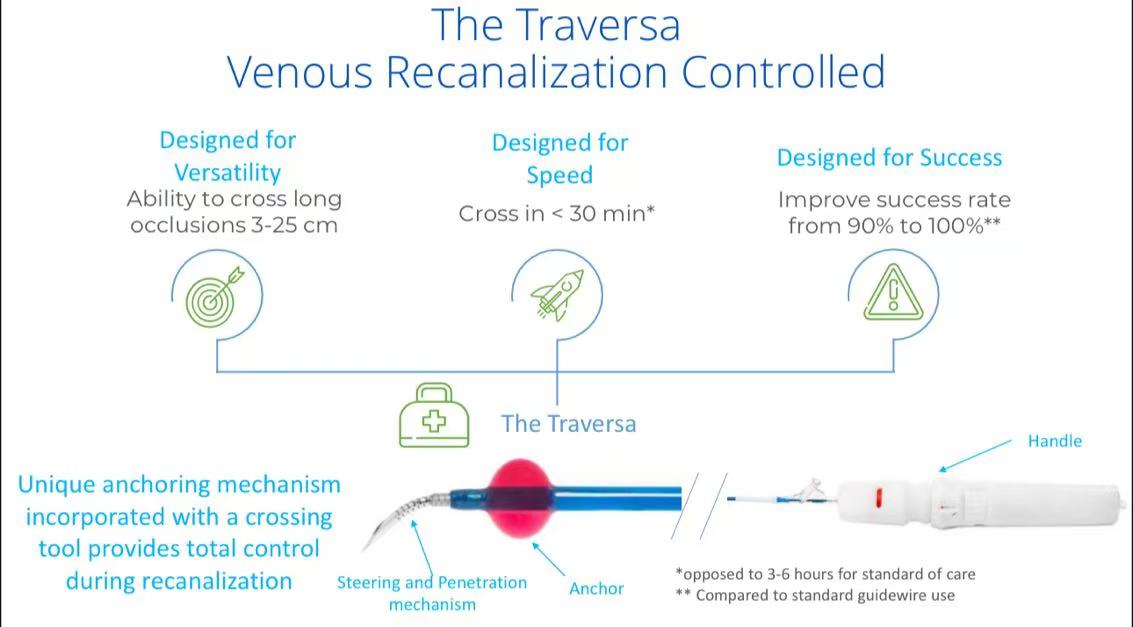
•Animal Model and Clinical Trial Success: Traversa successfully navigated lesions impassable by conventional guidewires in animal models and demonstrated significantly improved success rates in clinical settings. In one case, Traversa resolved a patient’s iliocaval occlusion after four previous failed recanalization attempts.
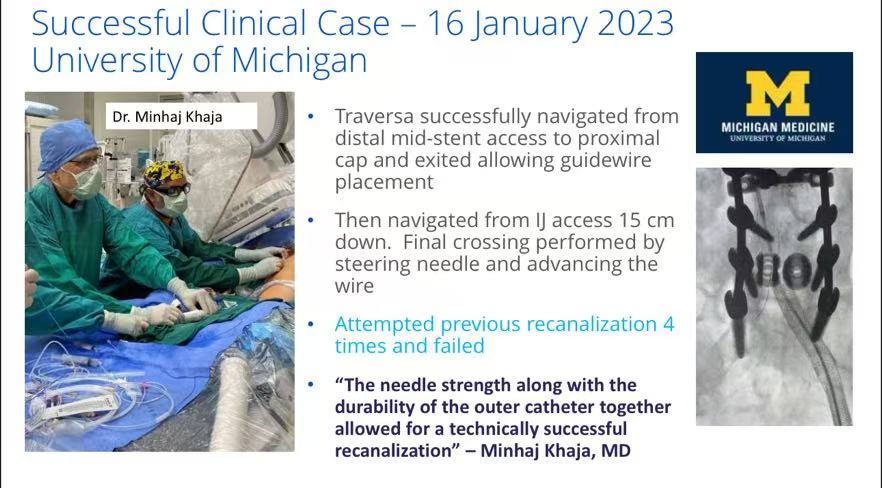
Case Study
•Case 1: A 39-year-old female with severe post-thrombotic syndrome (PTS) in the right arm could not lift her child. After failed attempts using other devices, the Traversa successfully restored patency, and the patient was pain-free immediately post-procedure.
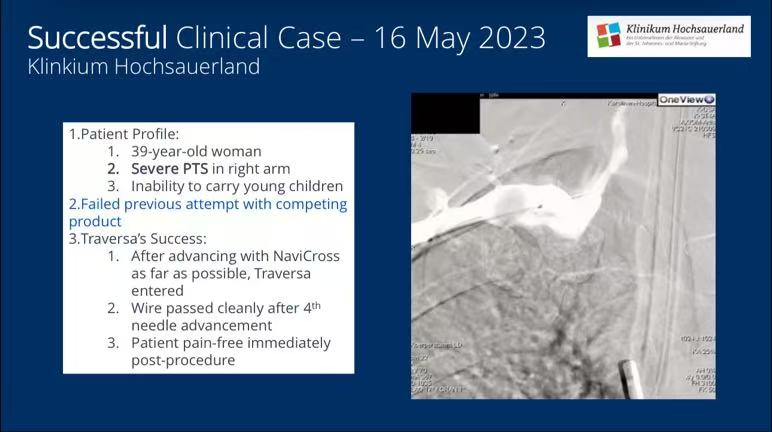
Conclusion
The Traversa device offers a new solution for recanalizing iliocaval venous occlusions. Its efficiency and reduced procedure time make it an ideal choice for treating complex occlusive diseases. As more clinical data becomes available, the Traversa device is likely to become a standard in recanalization techniques.
Contact Us
For submissions, please contact us at: endovascluar@simtomax.cn
Thank you for your attention, and let’s continue to safeguard health together!
More international information available at:
•Facebook: Vasco Knight
•Instagram: knight_vasco


